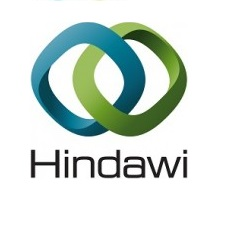| مشخصات مقاله | |
| ترجمه عنوان مقاله |
سطوح گلوکز پس از صرف غذا مرتبط است با فاکتورهای خطرپذیری برای سنجش دیابت برحسب گلوکز ناشتا و سطوح هموگلوبین گلیکوزیله پیش دیابت سالمندان: اثرات مفید مکمل های Polyherbal—یک کارآزمایی تصادفی، دوسوکور، پلاسیبو آزمایشی کنترل شده |
| عنوان انگلیسی مقاله | Postprandial Glucose Levels Are Better Associated with the Risk Factors for Diabetes Compared to Fasting Glucose and Glycosylated Hemoglobin (HbA1c) Levels in Elderly Prediabetics: Beneficial Effects of Polyherbal Supplements—A Randomized, Double-Blind, Placebo Controlled Trial |
| انتشار | مقاله سال ۲۰۱۹ |
| تعداد صفحات مقاله انگلیسی | ۱۴ صفحه |
| هزینه | دانلود مقاله انگلیسی رایگان میباشد. |
| پایگاه داده | نشریه هینداوی |
| نوع نگارش مقاله |
مقاله پژوهشی (Research Article) |
| مقاله بیس | این مقاله بیس نمیباشد |
| نوع مقاله | ISI |
| فرمت مقاله انگلیسی | |
| مدل مفهومی | ندارد |
| پرسشنامه | ندارد |
| متغیر | دارد |
| رفرنس | دارد |
| رشته های مرتبط | پزشکی |
| گرایش های مرتبط | پزشکی داخلی، غدد و متابولیسم، ژنتیک پزشکی |
| نوع ارائه مقاله |
ژورنال |
| مجله | طب مکمل و جایگزین مبتنی بر شواهد – Evidence-Based Complementary and Alternative Medicine |
| دانشگاه | Department of Community Health and Behavior Medicine, School of Public Health, Shanghai Jiao Tong University, Shanghai 200025, China |
| شناسه دیجیتال – doi |
https://doi.org/10.1155/2019/7923732 |
| کد محصول | E12972 |
| وضعیت ترجمه مقاله | ترجمه آماده این مقاله موجود نمیباشد. میتوانید از طریق دکمه پایین سفارش دهید. |
| دانلود رایگان مقاله | دانلود رایگان مقاله انگلیسی |
| سفارش ترجمه این مقاله | سفارش ترجمه این مقاله |
| فهرست مطالب مقاله: |
| ۱- Introduction
۲- Materials and Methods ۳- Results ۴- Discussion ۵- Conclusions References |
| بخشی از متن مقاله: |
|
Introduction More than 330 million individuals worldwide are estimated to have prediabetes and up to 70% will develop diabetes within a decade of initial diagnosis [1]. According to the US Centers for Disease Control (CDC), 84 million Americans (more than 1 out of 3) have prediabetes. Of these, 90% are unaware of their prediabetic status and up to 70% of them will eventually progress to diabetes [2]. Te average risk of developing diabetes is approximately 5–۱۰% per year in individuals with IFG or IGT, which is 10-15 times higher compared to individuals with normoglycemia. Prediabetes is a condition in which a person’s blood glucose level is higher than normal physiological levels but lower than individuals with diabetes. Prediabetes increases the risk of diabetes and cerebrocardiovascular disorders, which are the major causes of death worldwide [3]. Despite the worldwide prevalence of prediabetes and diabetes, many patients remain undiagnosed. Tis may be due to the current reference standards for fasting glucose (FG), or the inconvenience for individuals taking the 2horal glucose tolerance test (OGTT). In 2010, the American Diabetes Association approved the more expensive assay of glycated hemoglobin A1c (HbA1c) as one of the three tests for diabetes and prediabetes screening. However, recent studies have shown substantial discordance between results from FG, OGTT, and HbA1c, with OGTT probably being the more accurate diagnostic test for pre/diabetes associated with age, BMI, physical activity, income, education, race/ethnicity, etc. [4–۶]. Conversely, recent studies have shown that biomarkers for food intake and nutrient status were associated with glucose tolerance status and development of diabetes in the elderly [7]. Te utility of these new dietary biomarkers for determining pre/diabetes status has not been comprehensively evaluated in diferent ethnic populations. Oxidative stress, infammation, and peripheral insulin resistance lead to pancreatic beta cell overproduction; however eventual depletion of insulin secretion is thought to underlie the development of prediabetes and diabetes [8–۱۳]. Overweight, being 45 years or older, and lower physically active are associated with type 2 diabetes and are also the main risk factors for prediabetes [2, 14]. Modifcation in lifestyle, increase in physical activity, having a healthy diet, and maintaining a healthy body weight can lower the risk of developing prediabetes and diabetes [15–۱۷]. However, many people have difculties to adhere to these recommendations. Herbal supplements have long been used for disease prevention and treatment. Recent cellular and animal model studies have suggested that herbal supplements could improve glucose metabolism and protect from oxidative stress-induced diabetes [18–۲۴]. |
